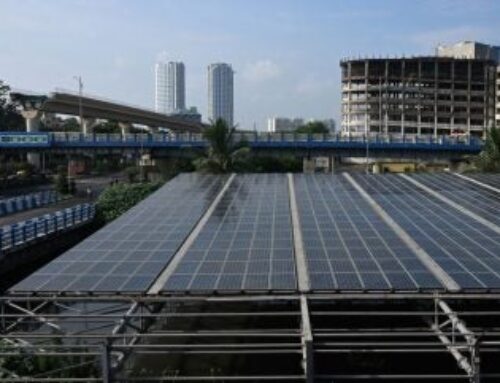Platforms and Ecosystems Revolutionise the Energy Transition
October 4, 2024

How are digital platforms and ecosystems transforming the energy sector?
According to Jo-Jo Hubbard, Co-Founder and CEO of Electron, digital platforms and ecosystems are transforming the energy sector by enabling real-time, flexible marketplaces that optimise energy distribution and consumption.
Jo-Jo founded Electron, a leading provider of marketplace software for flexibility and distributed energy, off the back of a career with McKinsey and Citi. She emphasises how these platforms facilitate the integration of renewable energy sources, enhance grid efficiency and lower operational costs by automating processes and fostering collaboration among energy providers, system operators and distributed energy assets alike.
Through initiatives like ElectronConnect, for example, these digital solutions are driving the transition from fossil fuels to a renewable-dominated energy system, creating value and sustainability at scale.
“To really scale, flexibility market platforms need to be deployed in the context of an open ecosystem of other services, upstream datasets and downstream analytics,” Jo-Jo attests, highlighting how Electron’s multi-market platform ElectronConnect boasts innovative features and methodologies to ensure seamless and efficient management within increasingly complex energy grids.
She continues: “ElectronConnect is built to accommodate day-ahead and future-focused real-time markets and asset trading options to maximise the uptake of renewable energy and grid capacity.
“We understand that greater volumes of flexibility will drive more value for system operators — and more value will drive greater volume fromFlexibility Service Providers (FSPs). These twin needs must be addressed together to start the virtuous circle.”
As energy costs rise, technologies move faster and commitment to sustainability becomes increasingly paramount. This, Frédéric adds, brings home the need for a “trusted, devoted ally” in the form of technologically-driven infrastructure.
“Armed with comprehensive knowledge of the unique systems that power their business, customers can make the best decisions in a challenging context of changing regulations, data requirements, technologies and energy mix,” he asserts.
Giving an example, Ruben adds: “Our platform thrives on automation. The speed and quality of data collection also strengthens our customers’ ability to forecast. We can help model the outcomes of various scenarios simultaneously, allowing providers to react swiftly to uncertainty.
“Grid stress events, new regulations, extreme weather — we can account for them all.”
However, the implementation of technology to enhance energy companies’ operations brings the challenges faced in integrating new technologies to the fore. This can be attributed in part to legacy systems, the ever-growing skills gap and increasing regulatory hurdles.
While overcoming these requires a phased approach to integration, investment in workforce training, as well as early engagement with regulators, is required to bridge this gap — and solutions like Schneider Electric’s modular systems, Gorilla’s automation and Electron’s flexibility services offer practical ways forward.
“Integrating new technologies into or around legacy systems poses several challenges,” Ruben declares. “For example, there are plenty of market experts in the energy industry, but energy data platform experts aren’t as common.
“Energy companies should partner with globally-minded technology providers — like Gorilla — which can bridge both the data gap and the expertise gap.
“Comprehensive and collaborative planning, and a phased approach to implementation, can mitigate the risks and ensure a smooth transition to the newer infrastructure. This lets in-house teams focus on generating value and getting energy sold at the right price, rather than getting bogged down in endless system tweaks.”
Frédéric concludes: “As the transitioning energy system increases its reliance on clean technologies, the energy labour workforce must acquire the expertise and skills needed to support the energy transition and electrification at scale.
“With digital innovation, the invisible can become visible. Digital technology such as monitoring enables businesses to see how energy is being used. Combining this visibility with analytics and software goes a step further and enables the deployment of smart energy more efficiently.”
Search
RECENT PRESS RELEASES
Related Post



